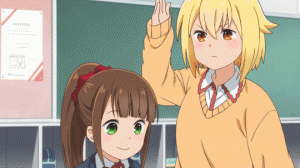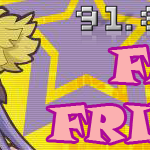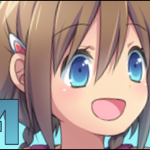The Wandering Witch Discusses Hitoribocchi no Marumaruseikatsu

Welcome, all, again. My last post herein covered The Magnificent Kotobuki, a group of pilots first fighting air pirates, then transitioning to fight an actual war. Likewise, my most recent post on my personal blog (at least as I write this) was a review of Saga of Tanya the Evil: the Movie–more warfare. So let’s dial things back a bit and focus on a more personal conflict, social anxiety disorder; let’s talk about Hitoribocchi no Marumaruseikatsu. Based upon a yonkoma manga by Katsuwo, this is basically a lighthearted look at living with SAD while trying to overcome the limitations it imposes. Our heroine, Bocchi Hitori, is entering her first year of middle school, a time of life when most people begin discovering insecurities unknown to their childhood days. After all, puberty is at hand; hormones are bubbling over like a shaken can of soda; and the opinions of one’s peers take on a sudden, pronounced importance. Who wouldn’t be worried, if not blatantly terrified? Now, throw in a case of genuine social anxiety disorder, and you’ve got potential adolescent angst of catastrophic proportion. You’ve got Bocchi Hitori:

All during elementary school, Bocchi has had one friend. Just one, Kai Yawara. But as they prepare to go to separate middle schools, Kai–knowing that Bocchi’s innate shyness will cripple her socially–informs Bocchi that she is suspending their friendship until Bocchi can befriend all of her new classmates. At this point, Bocchi might have hurled herself from an overpass. . .if she weren’t too darn shy to even meet oncoming cars. Kai’s ultimatum (what a jerk, right?) both devastates and terrifies Bocchi, but she’ll do whatever she has to do just to keep her childhood friend! At least, that’s her intention. But when it comes to actually speaking to people, well, things just don’t come easily for her, despite her motivation. Bocchi’s first target is the delinquent who sits in front of her in class, Nako Sunao. Mind you, Nako isn’t really a delinquent, she just has a rough-and-tumble appearance. She’s actually quite friendly once Bocchi approaches her and sympathetic to Bocchi’s social ineptitude. [This is probably a good place to tell readers that the names of characters in this story are expressions of their personalities. According to informational articles about the manga/anime, Hitoribocchi means “all alone;” sunao na ko means “honest child;” etc.] Nako is exactly the friend Bocchi needs.

Nako chops Aru. . .
Buoyed by this first success, Bocchi–between paralyzing bouts of self-doubt–actually manages to lure in a second friend without much intention. Bocchi lets it slip that she’s trying to befriend the entire class, making Nako feel a little less special. Unaccustomed to dealing with people’s feelings, Bocchi is at a loss as to why Nako is seemingly upset with her, and panics at the prospect of losing her first new friend. Her distress attracts the attention of the class vice-president, Aru Honsho, who offers to guide Bocchi’s efforts towards reconciliation. In doing so, Aru sort of stumbles into a friendship with Bocchi, although the latter must (as usual) make things more complicated than need be. Now, I understand how this tendency of Bocchi’s to overthink things and project absolute worst outcomes might quickly become tiresome to some viewers–that’s why episode 4 is such a breath of fresh air, practically rejuvenating the story! Because in this episode, not only are we introduced to a character even odder than our protagonist, but we witness a watershed moment for Bocchi: when her concern for another person prompts her to reach out in spite of her SAD. In my mind, this single brave act opens Bocchi’s entire world to new possibilities.

But what exactly is Social Anxiety Disorder? According to the National Institute of Mental Health (website), SAD is characterized by persistent fear of one or more social or performance situations in which the person is exposed to unfamiliar people or to possible scrutiny by others. The individual fears that he or she will act in a way (or show anxiety symptoms) that will be embarrassing and humiliating. And statistics show that in both adolescents and adults, the condition is more prevalent amongst females than males–pronouncedly so during adolescence. Treatment options are tailored individually, but generally come down to medication and/or psychotherapy–particularly cognitive behavioral therapy, which seeks to change thought and behavior patterns while promoting positive emotional regulation.

Despite some weak plotlines, I like this series’ approach. It’s a gentle comedy in slice-of-life format; more importantly, the show recognizes Bocchi’s condition without trivializing it. Hitoribocchi no Marumaruseikatsu takes a mental health condition which most of us have probably encountered and makes it relatable, maybe even a bit more understandable. Meanwhile, Bocchi continues to challenge herself. And while she may not be a role model, she’s certainly an inspiration!
















iStalk? uStalk!